Abstract
The agar disk diffusion susceptibility test was reevaluated for its ability to discriminate between susceptible and resistant Staphylococcus aureus (128 strains) and coagulase-negative staphylococci (19 strains) when tested with methicillin, oxacillin, and nafcillin. The results show that the current recommendations for disk potencies and interpretive zone diameters do not fit well with MIC correlates that we now recommend. Based on data from this study, we suggest that these parameters of the test be changed. For methicillin, we recommend a 10-micrograms disk with breakpoints of less than or equal to 11 mm (greater than or equal to 16 micrograms/ml) to indicate resistance and greater than or equal to 15 mm (less than or equal to 4 micrograms/ml) to indicate susceptibility. For oxacillin and nafcillin, we recommend 4-micrograms disks with breakpoints of less than or equal to 12 mm (greater than or equal to 8 micrograms/ml) to indicate resistance and greater than or equal to 16 mm (less than or equal to 2 micrograms/ml) to indicate susceptibility. MIC breakpoints were from a broth microdilution system which used a medium containing salt. If one of these three penicillins were to be selected for routine tests, we would recommend oxacillin, based on our data, but we recognize that this may depend upon the population of staphylococci within a particular hospital.
Full text
PDF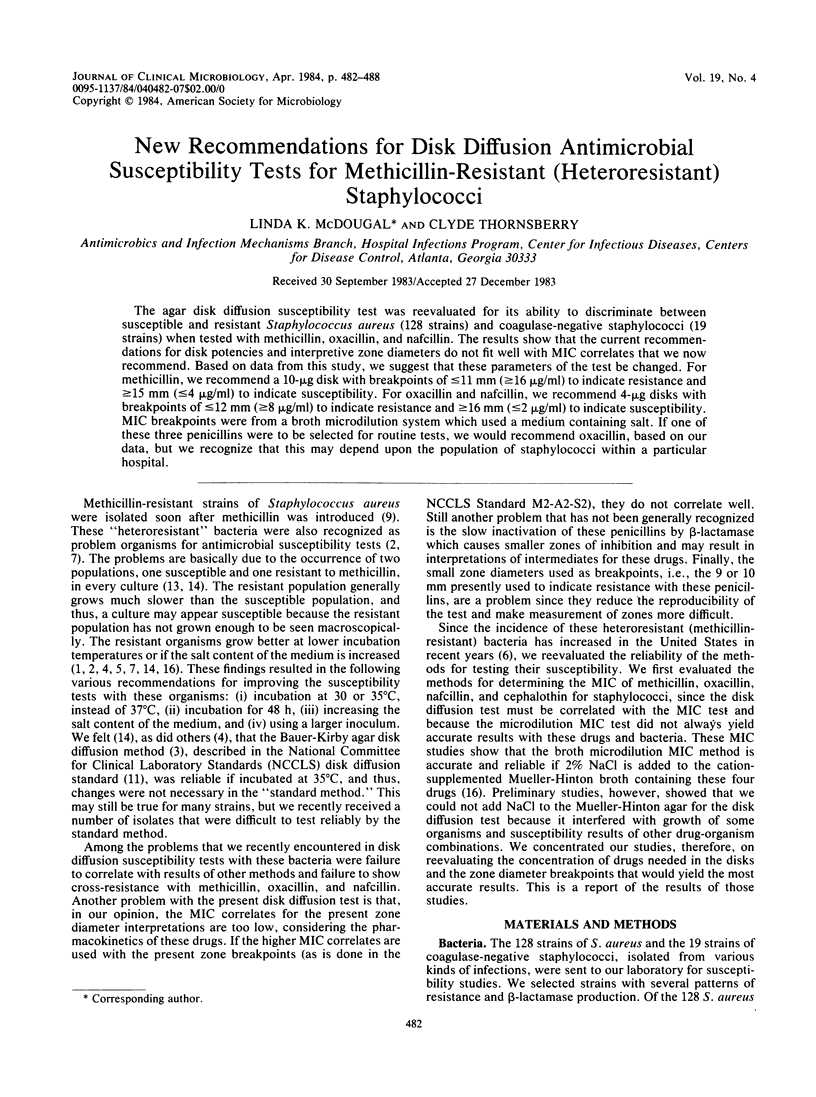
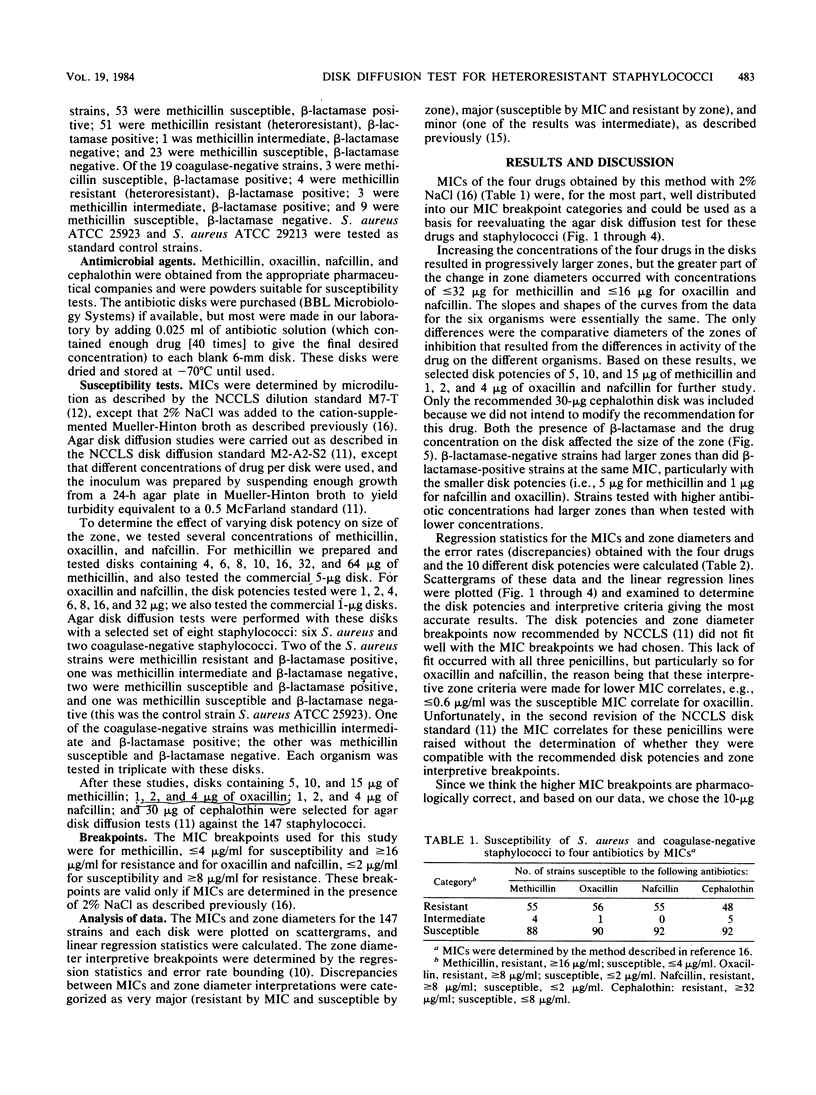
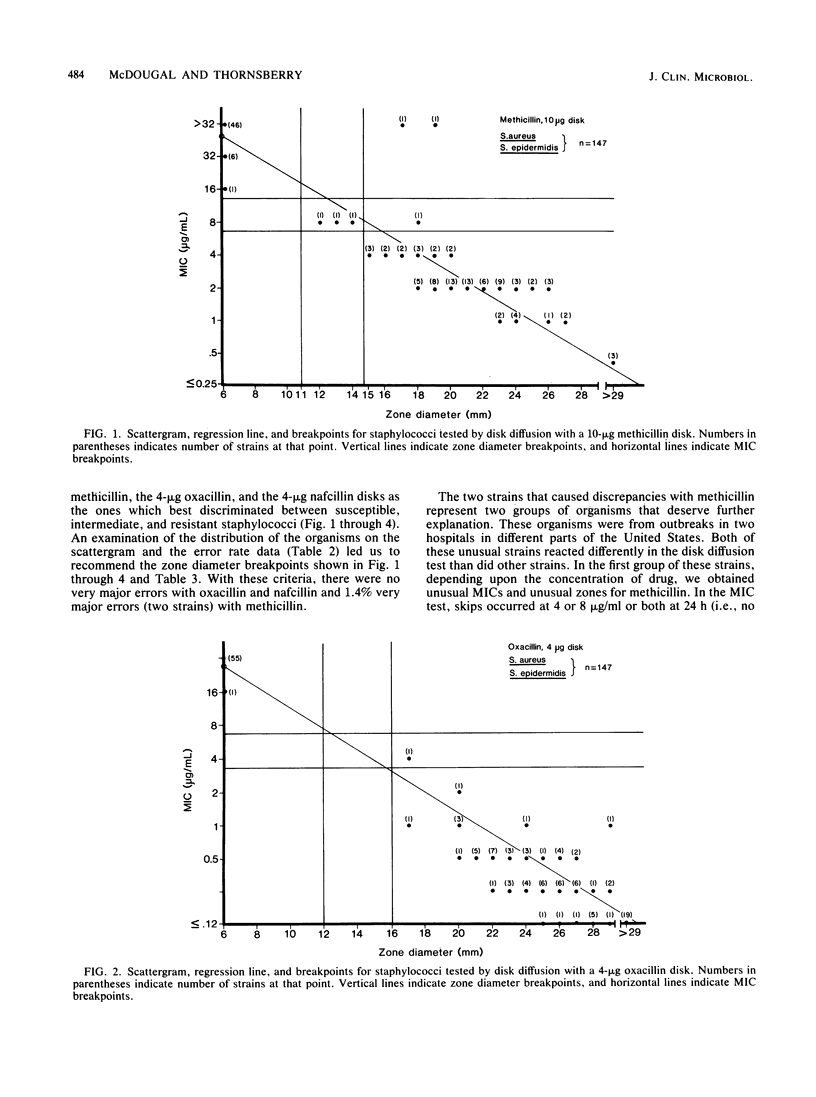
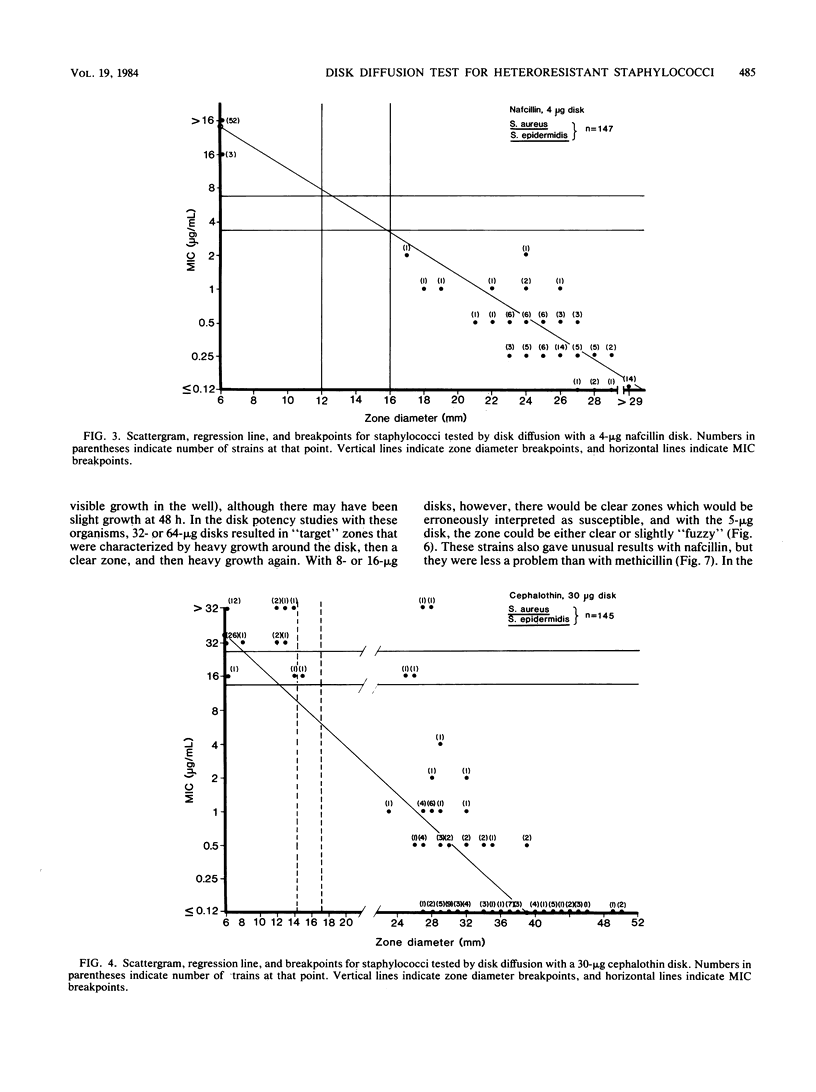
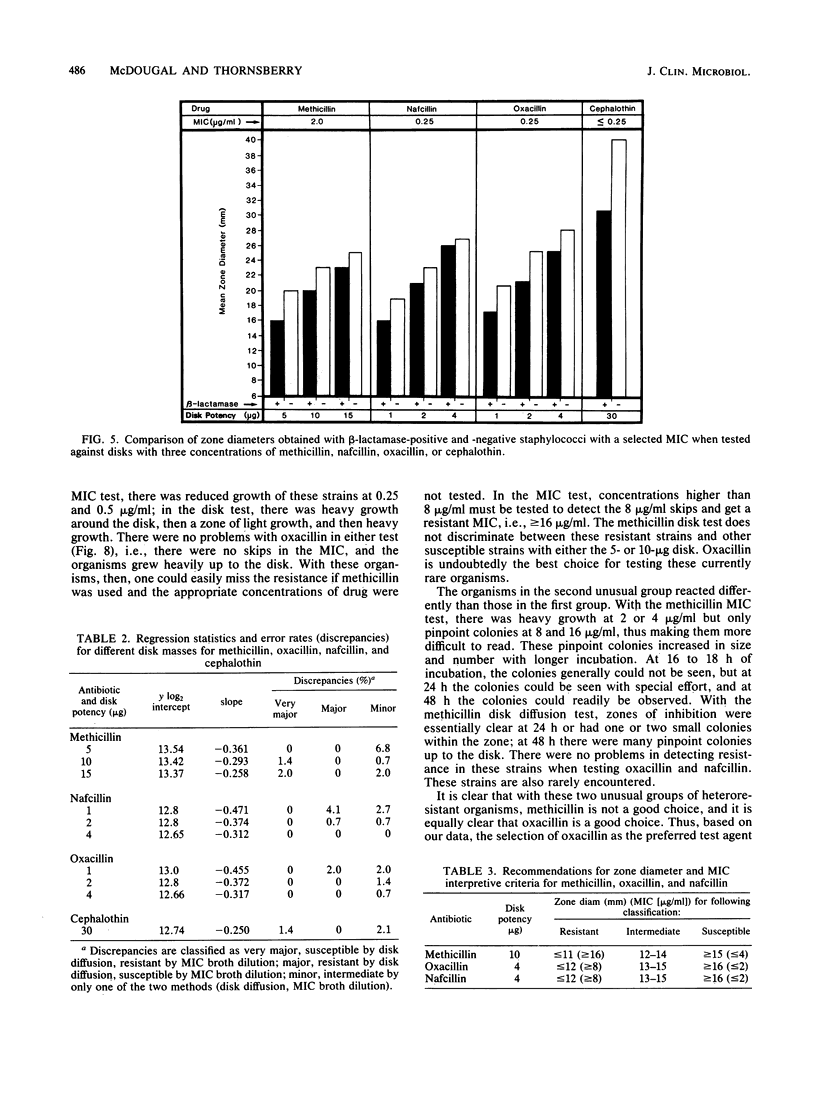
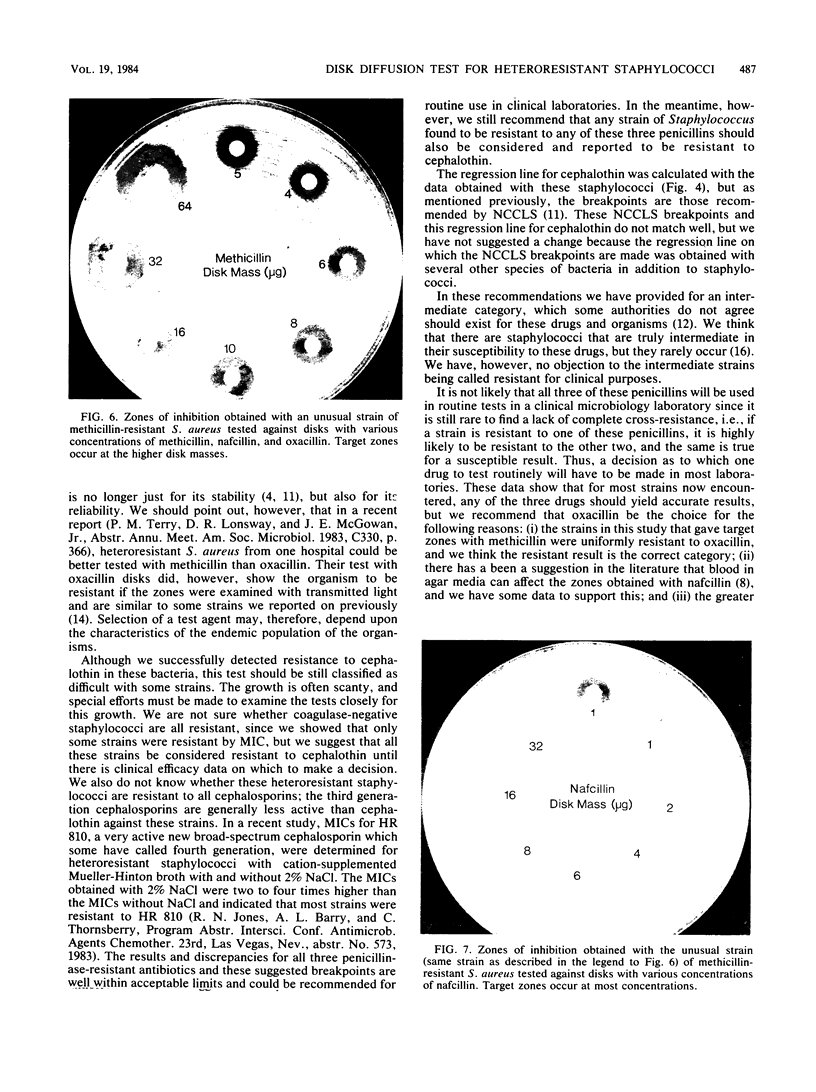
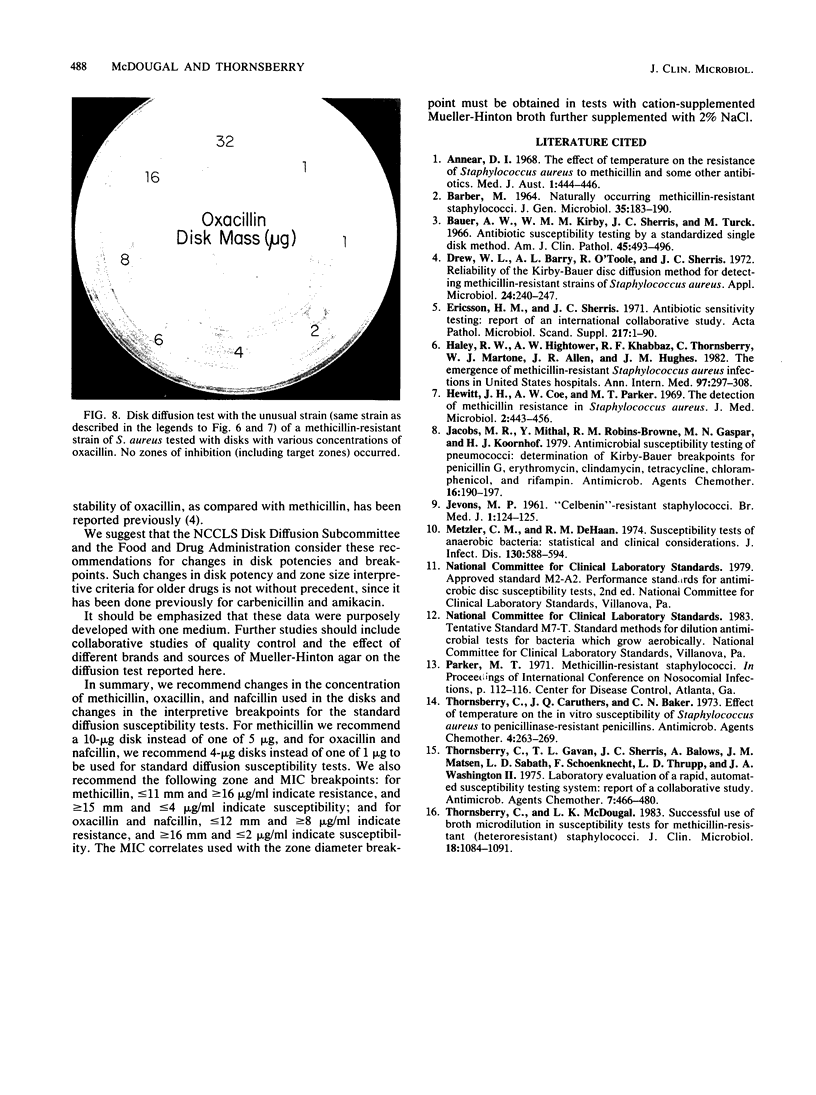
Images in this article
Selected References
These references are in PubMed. This may not be the complete list of references from this article.
- Annear D. I. The effect of temperature on resistance of Staphylococcus aureus to methicillin and some other antibioics. Med J Aust. 1968 Mar 16;1(11):444–446. [PubMed] [Google Scholar]
- BARBER M. NATURALLY OCCURING METHICILLIN-RESISTANT STAPHYLOCOCCI. J Gen Microbiol. 1964 May;35:183–190. doi: 10.1099/00221287-35-2-183. [DOI] [PubMed] [Google Scholar]
- Bauer A. W., Kirby W. M., Sherris J. C., Turck M. Antibiotic susceptibility testing by a standardized single disk method. Am J Clin Pathol. 1966 Apr;45(4):493–496. [PubMed] [Google Scholar]
- Drew W. L., Barry A. L., O'Toole R., Sherris J. C. Reliability of the Kirby-Bauer disc diffusion method for detecting methicillin-resistant strains of Staphylococcus aureus. Appl Microbiol. 1972 Aug;24(2):240–247. doi: 10.1128/am.24.2.240-247.1972. [DOI] [PMC free article] [PubMed] [Google Scholar]
- Haley R. W., Hightower A. W., Khabbaz R. F., Thornsberry C., Martone W. J., Allen J. R., Hughes J. M. The emergence of methicillin-resistant Staphylococcus aureus infections in United States hospitals. Possible role of the house staff-patient transfer circuit. Ann Intern Med. 1982 Sep;97(3):297–308. doi: 10.7326/0003-4819-97-3-297. [DOI] [PubMed] [Google Scholar]
- Hewitt J. H., Coe A. W., Parker M. T. The detection of methicillin resistance in Staphylococcus aureus. J Med Microbiol. 1969 Nov 4;2(4):443–456. doi: 10.1099/00222615-2-4-443. [DOI] [PubMed] [Google Scholar]
- Jacobs M. R., Mithal Y., Robins-Browne R. M., Gaspar M. N., Koornhof H. J. Antimicrobial susceptibility testing of pneumococci: determination of Kirby-Bauer breakpoints for penicillin G, erythromycin, clindamycin, tetracycline, chloramphenicol, and rifampin. Antimicrob Agents Chemother. 1979 Aug;16(2):190–197. doi: 10.1128/aac.16.2.190. [DOI] [PMC free article] [PubMed] [Google Scholar]
- Metzler C. M., DeHaan R. M. Susceptibility tests of anaerobic bacteria: statistical and clinical considerations. J Infect Dis. 1974 Dec;130(6):588–594. doi: 10.1093/infdis/130.6.588. [DOI] [PubMed] [Google Scholar]
- Thornsberry C., Caruthers J. Q., Baker C. N. Effect of temperature on the in vitro susceptibility of Staphylococcus aureus to penicillinase-resistant penicillins. Antimicrob Agents Chemother. 1973 Sep;4(3):263–269. doi: 10.1128/aac.4.3.263. [DOI] [PMC free article] [PubMed] [Google Scholar]
- Thornsberry C., Gavan T. L., Sherris J. C., Balows A., Matsen J. M., Sabath L. D., Schoenknecht F., Thrupp L. D., Washington J. A., 2nd Laboratory evaluation of a rapid, automatic susceptibility testing system: report of a collaborative study. Antimicrob Agents Chemother. 1975 Apr;7(4):466–480. doi: 10.1128/aac.7.4.466. [DOI] [PMC free article] [PubMed] [Google Scholar]
- Thornsberry C., McDougal L. K. Successful use of broth microdilution in susceptibility tests for methicillin-resistant (heteroresistant) staphylococci. J Clin Microbiol. 1983 Nov;18(5):1084–1091. doi: 10.1128/jcm.18.5.1084-1091.1983. [DOI] [PMC free article] [PubMed] [Google Scholar]





